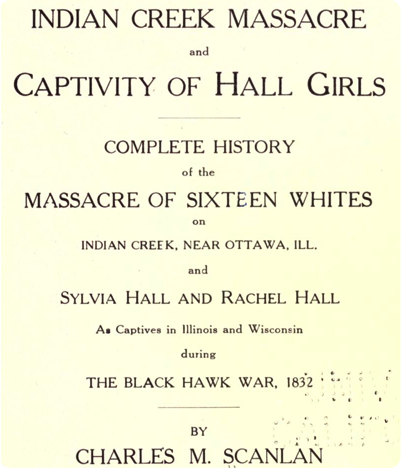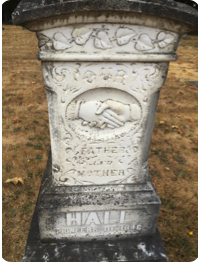Sylvester Hall, farmer, stock raiser and feeder, is the owner of 330 acres of land, his residence being on section 15. He was born in Bureau County, Illinois, October 31, 1837. He received a good district school education and worked hard at home, helping his father, John Hall, to improve a large farm. In 1851 the elder Hall, desiring to help his children to obtain some land, selected the Platte Purchase, sold his valuable farm in Illinois and moved to this county, where he bought a large tract of land, in and about Sonora, there making a good place. In 1858 he gave his son Sylvester 120 acres of land, which is now a part of his large and valuable farm. Few young men made better use of their time, or the small means at his command. With the additions made to his original gift not many men in the county have as good a home. Mr. Hall was married to Miss Sarah Elizabeth Horn, daughter of James and Sarah C. Horn, in 1861. They have seven children living: Melvina Isabel Garst, Mary Ann, Elizabeth Caroline, James Edward, Zuritha, Cora L., and Robert Crawford. Malissa died when three years old and two died in infancy. Mr. Hall is a Democrat in his political views and an active member of the Cumberland Presbyterian Church. He belongs to the Masonic lodge in Watson. He is one of the most enterprising men of the county, has always taken an active part in building up schools, churches, and all enterprises calculated to make the world and community better for his having lived in it.
Migrating to Illinois
The area around Bureau County and La Salle Counties in Illinois played a significant part in the Hall family history, and visa versa.
It started with our 4th Great Grandparents, Edward H. Hall and Rachel Barnes. They were married in Wilkes, Georgia, about 1782 and had eight children there. (He was of English extraction and she was of Welsh extraction.) After 16 years, around 1798, they moved approximately 400 miles northwest to Logan County and Warren County, Kentucky. They lived there 17 years and then moved 130 miles north to Dubois County, Indiana, where they lived for approximately 14 year. The final move to Bureau County, about 300 miles northwest, was started on May 21, 1832.
Some of their children arrived earlier. Reason Hall built a cabin on Section 34, town of Hall in Bureau County in the summer of 1828. In August, 1832, Henry Miller (husband of Sally Hall), made a claim in the town of Hall. Other settlers came in soon after, among whom were Ransom and E. C. Hall. And one brother, William Hall, was killed on May 20, 1832, at his home during the Indian Creek Massacre.
“While residing near Fayetteville, Cumberland County, North Carolina, Edward Hall enlisted and served in 1779 as a Revolutionary War Soldier, three months as a Private in Captain Crump's North Carolina company, and was in an engagement at Brown's Creek in North Carolina. He served in 1780, three months in Captain Duck's company under Colonel Malmedy, and in an engagement near Bear Creek. He served again in 1780, three months in Captain Fletcher's company, and on his way home at the expiration of this service, he was taken prisoner by the Tories, but made his escape before reaching their encampment. He served three months in Captain Bledsoe's company, Colonel Litteral's North Carolina regiment, and was in the Battle of Lindley's Mill, which took place on September 13, 1781.” From "Biographical Sketches of Bureau County, Illinois" (pub. 1885)
“Edward Hall, the father-in-law of Henry Miller, settled in Selby Township in August, 1832, but in the fall of 1835 he removed to Hall Township and lived on his son-in-law's farm in section 33, where he died June 28, 1838, aged 80 years. He was interred on the farm and was the first to be buried in the spot that he selected for his final resting place, where also his wife and quite a number of the pioneers of Hall Township repose. "He is a Revolutionary soldier," is written on the tomb of Edward Hall, and no grander and better eulogy could have been written than is contained in those few words, which were suggested by his grandson and admirer, Henry J. Miller. Edward Hall was probably the only Revolutionary soldier buried in Bureau County. He was also one of our old-fashioned pioneer Methodist Episcopal ministers, whose words of admonition are still remembered by a few of our old settlers.” From "Biographical Sketches of Bureau County, Illinois" (pub. 1885)
He is in a shared grave with his wife Rachel & Daughter, Sally Hall Miller. Edward H. Hall's grave is marked as that of a Revoluntionary War veteran.
William Hall's name was etched into history by the Indian Creek Massacre. He was killed, along with his wife, Mary Jane, a nineteen year old son named Greenbury, and an eight year old daughter, Elizabeth. Their 17 year old daughter, Sylvia, and 14 year old daughter, Rachel, were taken captive.
One son, 24 year old John Wesley Hall, escaped from the house and survived. William Hall’s younger brother, John W. Hall, also escaped. There were sixteen people killed that day.
An immediate pursuit of the girls was undertaken. One of the leaders of the pursuing troops was Captain Abraham Lincoln. The girls were successfully ransomed after eleven days.
It is described in gruesome detail in the book Indian creek massacre and captivity of Hall girls by Charles M. Scanlan.
John W. Hall, our 3rd great grandfather, was well respected. Hall Township, originally called Plume, was named in honor of him. He 1st settled in Selby. In fact, Hallowayville was once called Halltown. Mr. Hall made very large farm improvements on his claim. He sold this to Hassler for $4000; he then entered claim to a great deal of land in the County. He was illiterate but large minded and a great businessman. He finally sold out and went to Missouri and merchandised very extensively. Among the early pioneers he was one of the most valuable citizens. John, William and Reason B Hall were brothers. (History of Bureau County, page 151)
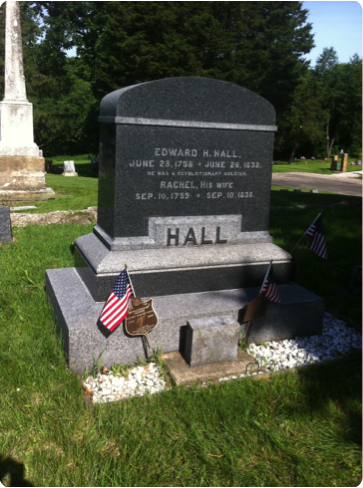
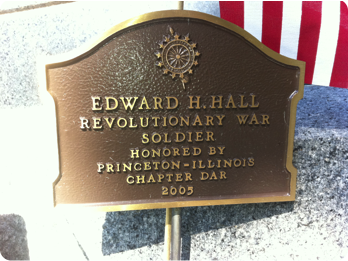
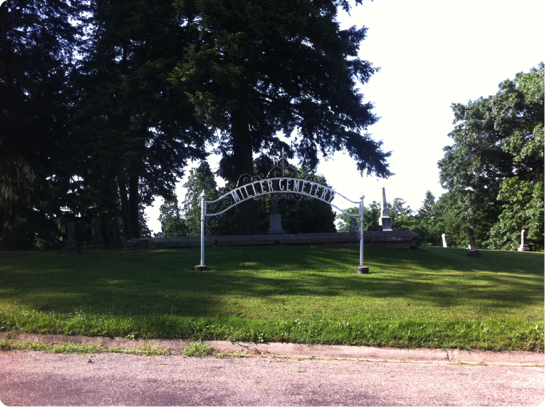
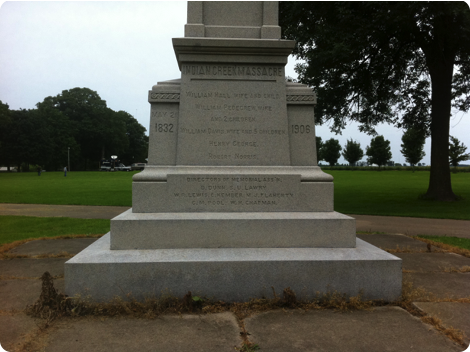
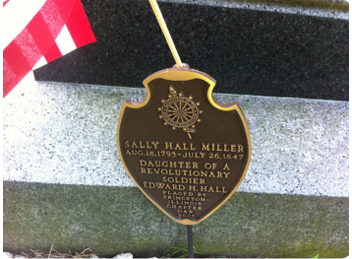
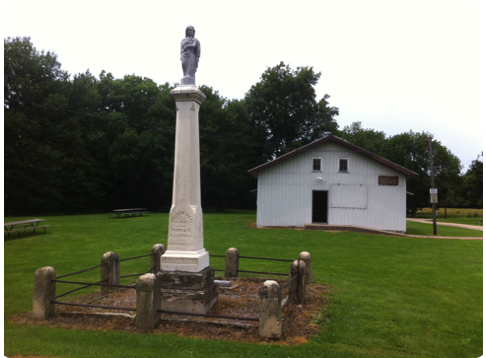
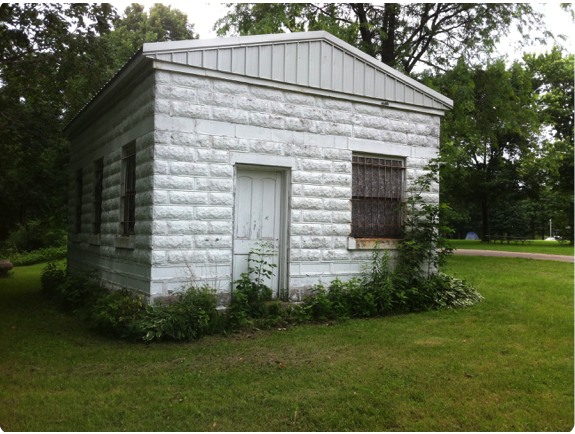
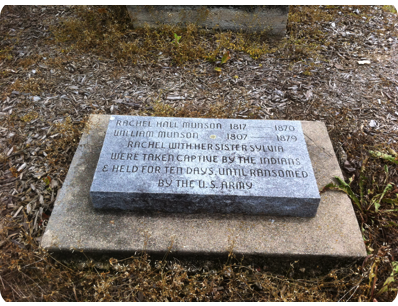
Reason Bowie Hall was born in Georgia about 1792 and moved to Logan County, KY, as a young man with his family. His middle name was in honor or the father of Jim Bowie, inventor of the Bowie Knife and defender of the Alamo. The Bowie's and the Hall's had been friends and neighbors in Kentucky.
Reason Bowie Hall was married twice, first in 1809 to Fannie Slocum. Fannie was born in Georgia and died in White Co., Illinois. Fannie and Reason had one son, of whom nothing is known. Fannie's family was responsible for maintaining a fort in Gallatin County, Illinois during the War of 1812.
Reason's second wife was Martha Wright. They were married in 1826 in Dubois County, Indiana, where the Edward Hall clan had moved.
In 1846 Reason B. Hall and his pregnant wife, Martha, plus their six children traveled the Oregon Trail with Captain Rice Dunbar's Company. While they were on the trail twin boys were born, one daughter died, and one daughter, Mary Ann Hall, got married. At Fort Hall they took the Applegate Cutoff to follow the Applegate Trail. Fortunately, Capt. Dunbar's company headed north for Independence, Oregon, while the Donner party took the cutoff for California. Although they avoided the tragidy suffered by the Donner group, they suffered terrible hardship and narrowly excaped starving to death.
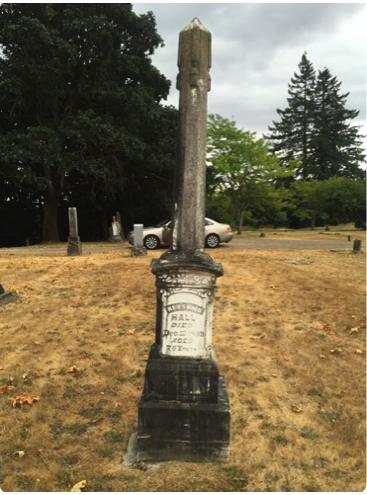

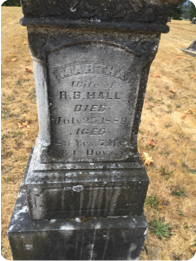
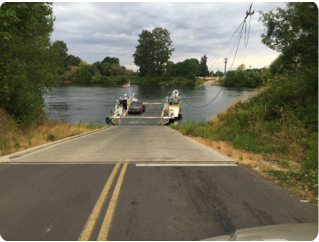
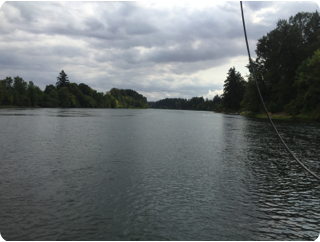
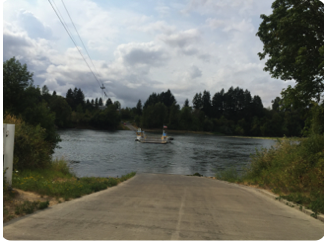
Buena Vista, Oregon was named by Reason B. Hall, whose donation land claim formed the site for the community. He named the town Buena Vista because some of his relatives had participated in the Battle of Buena Vista, Mexico. The town was at one time considered for the site of the capital of Oregon. About the time he named the community, he started Halls Ferry across the Willamette River, which is still in operation.
John Hall, one of the first settlers in Bureau County, was born in Georgia, and when about four years of age removed with his parents to Kentucky, where he remained till after his first marriage, which was to a Miss Horn, by whom he had two children. After marriage he removed to Indiana, and his wife died. He was then married to Elizabeth Kellums in Indiana, and she was the mother of thirteen children. Of the family the following yet survive (note: the book was published in 1885): Wesley Hall, of Iowa, near Burlington; Mrs. Eliza Brown, a widow; Mrs. Melinda South, Mrs. Marena Bookum, Sylvester, Elijah and Elisha reside in Atchison County, Mo.; Charlton Hall lives near Nebraska City, Neb.; and William Hall, the youngest of the family, resides in Iowa. More of John Hall and his settlement in Bureau County will be found in the General History. (History of Bureau County, page 537)
In 1851 John and Elizabeth Hall, and five of their children moved approximately 400 miles west to Nishnabotna Township, in Atchison County, Missouri. (From Wikipedia: Nishnabotna Township covers an area of 26.78 square miles and contains one incorporated settlement, Watson. It contains two cemeteries: Addington and Sonora. The Nishnabotna River enters the Missouri River in the northwest corner of the Township. There is little physical relief, as the Township lies almost entirely on the floodplains of the two rivers.)
They again played a significant roll in the development of their new community. (The following was taken from page 838 of The History of Holt and Atchison Counties, Missouri, containing a history of these counties, their cities, towns, etc.; St Joseph, Mo.: National Historical Company, 1882.
John Hall died on 27 April 1861 and was buried in the Sonora Cemetery. Elizabeth Kellums died on 9 Nov 1875 and was buried in the Sonora Cemetery.
Mary Melinda Hall died 13 July 1909
Sylvester Hall died 11 April 1918
Irena Marina Hall died 2 Oct. 1897
Elijah Hall died 10 Oct 1895
Elisha Hall date of death is currently unknown.
John Hall, his father, was born in Georgia, but raised in Kentucky. He was amoung the earliest settlers in Sonora and did much to help build up that town. He first erected a saw mill with horse power, and afterwards built a fine steam mill, a large warehouse and started a store, working hard to make a business town. At the same time he was improving his large farm, these improvements being commenced in 1851. He married Elizabeth Kellums, of Indiana. They had thirteen children: Wesley, Louisa B. Brown, Charlton, Elizabeth South, Sylvester, Irena Buckham, Elijah and Elisha (twins), and William M. John Hall died near Sonora, in the spring of 1861. Mrs. Hall died in the fall of 1875. He was an active Methodist.
Edward and Rachel Hall’s children, and their children’s spouses, were major players in the development of this area. Hall Township was named in honor of John W. Hall. Sally Hall’s husband, Henry Miller, was one of the principal founders of the town of Spring Valley, Illinois. Today the high school in Spring Valley is named the “Hall High School”.
"The progenitor of the Miller family was Henry Miller, who was born in North Carolina, where his father died. His mother, Elizabeth Miller (nee Detheridge), died in Warren County, Ky., to which place she had removed with her son. Henry Miller was married in the latter place to Sally Hall, born in Georgia, daughter of Edward and Rachel (Barnes) Hall, both natives of Georgia; the former of English and the latter of Welsh extraction.
In 1818* Henry Miller, accompanied by his father-in-law and family, removed from Warren County, Ky., to Dubois County, Ind., where they farmed fourteen years. From some members of the Hall family, they heard of the beauties of the Illinois prairies, and in 1830 Henry Miller, Edward Hall and the latter's son-in-law, Gilbert Kellum, made claims in Bureau County. They came here alone and returned the same year to Indiana. On the 21st day of May, 1832, on the very day of the Indian Creek massacre, they started for Bureau County, little dreaming that on that very day some members of their family would be cruelly butchered by the inhuman savages, whom some still call the "noble red men of the woods." This little colony numbered fourteen souls, all told. They were compelled to stop several weeks on Ox Bow Prairie, on account of the Black Hawk war, their teams having been pressed into government service to haul provisions for the troops.
The three families arrived in Bureau County in August..."
"... Henry Miller settled on section 33, in Hall Township, on the 24th day of August, 1832. He made a claim and afterward entered 380 acres of land. He is the only man in the township who entered his original claim and lived on it till his death, which occurred December 6, 1852, aged sixty-six years. His wife, Sally Hall, died July 26, 1847, aged fifty-three years. She was a true helpmate and belonged to that noble type of women which we generally find on the frontier.”
*According to Federal land records, Henry acquired his land in Dubois County, Indiana Dec. 6, 1817. “ From "Biographical Sketches of Bureau County
The Miller, Horn, and Kellums families were with the Edward H. Hall family in Kentucky and Indiana and then moved on with them to Illinois. These families apparently had a long close relationship and were actively involved with the Methodist Episcopal religion.
They also had marriages connecting them. For example,
John W. Hall married Polly Horn on 22 February, 1814, in Logan County, Kentucky. She died three years later in Indiana.
John W. Hall married Elizabeth "Betsey" Kellums on 19 February, 1818, in Orange County, Indiana.
Gilbert Kellums, married Jphm Hall's sister, Elizabeth “Betsey” Hall in Dubois County, Indiana.
Another sister, Sarah “Sally” Hall married Henry Miller on 18 November, 1811, in Warren County, Kentucky.
